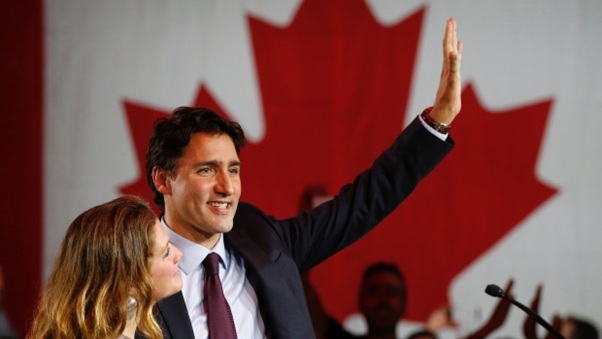
05/11/2015, by CLAS
Regime Change in Canada: Trudeau MK2
While news of North American politics in the UK has lately focused on Donald Trump’s perplexing Republican presidential nomination bid, another campaign was unfolding north of the border, culminating in Canada’s 42nd federal election on 19 October. After nine years of government by Stephen Harper’s Conservatives (two minority governments followed by a majority in 2011), most Canadian voters clearly craved a regime change. Having initially come to power in 2006 on a campaign of ‘accountability’, the Harper government became associated with political scandal, election fraud, environmental devastation (given Harper’s support from the oil industry, his determination to build pipelines across Indigenous territories and vulnerable ecosystems, and his withdrawal of Canada from Kyoto), suppression of dissent (with protestors now considered terrorists), muzzling of scientists, and deteriorating relationships with Indigenous peoples (‘It’s not on our radar,’ Harper responded when asked why the government would not launch an inquiry into the fact that there are more than 1000 missing and murdered Indigenous women in Canada).
Because Canada shares the UK’s First Past the Post system, the question surrounding this election was not whether the majority of voters wanted Harper out, but whether they would succeed in ousting him, and if so, which party would benefit from his demise. During one of the longest election campaigns in Canadian history (78 days), the polls variously indicated a majority government for the left-of-centre New Democrats, who were the Official Opposition, a majority government for the Conservatives, and, closer to election day, a minority government of some description. Ultimately, the centrist Liberal Party, having sunk to third place in 2011, achieved a majority government—its first since that won by Jean Chrétien in 2000—after a campaign that saw the NDP running a centrist campaign in economic terms, promising a balanced budget, the Liberals appearing to outflank them on the left by raising personal income tax on the top 1% of earners and planning to run a modest deficit in order to invest in infrastructure, and the Conservatives attempting to win through a xenophobic anti-niqab campaign (reportedly inspired by Australian strategist Lynton Crosby) that disgusted many voters.
It remains to be seen whether the Liberals, under Justin Trudeau, the son of former Canadian prime minister Pierre Elliott Trudeau, will be following in the footsteps of previous Liberal governments: campaigning on the left only to govern from the right. Expectations that Trudeau will undo the many wrongs of Harper’s near-decade in power are high, including issues as diverse as the restoration of postal home delivery, addressing climate change, and launching an inquiry into missing and murdered Indigenous women as well as implementing the 94 calls to action in the report of the Truth and Reconciliation Commission, established to investigate the legacy of Indian residential schools in Canada.
If Canadians woke up to a new country on October 20th, we wait to discover what exactly that country will look like and how many of his promises Trudeau intends to keep.
Gillian Roberts, American and Canadian Studies
No comments yet, fill out a comment to be the first

Leave a Reply